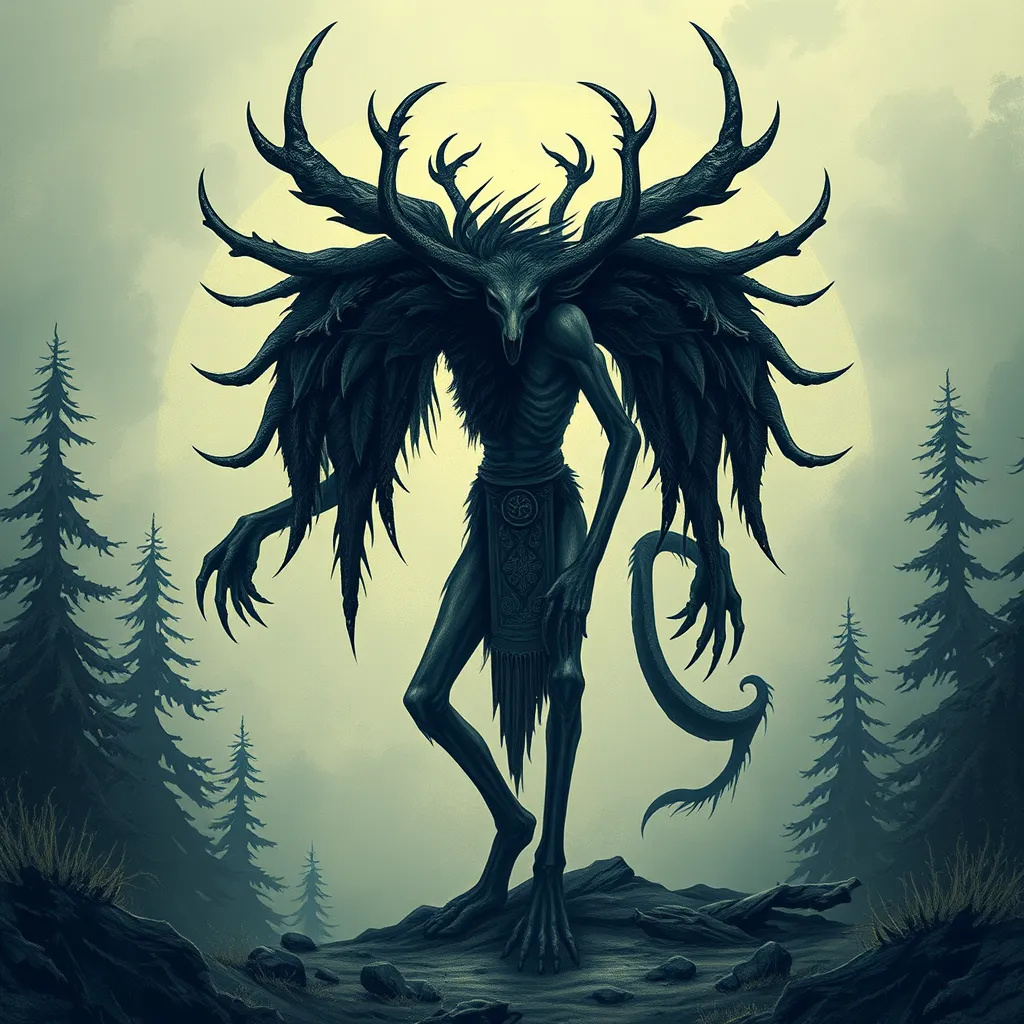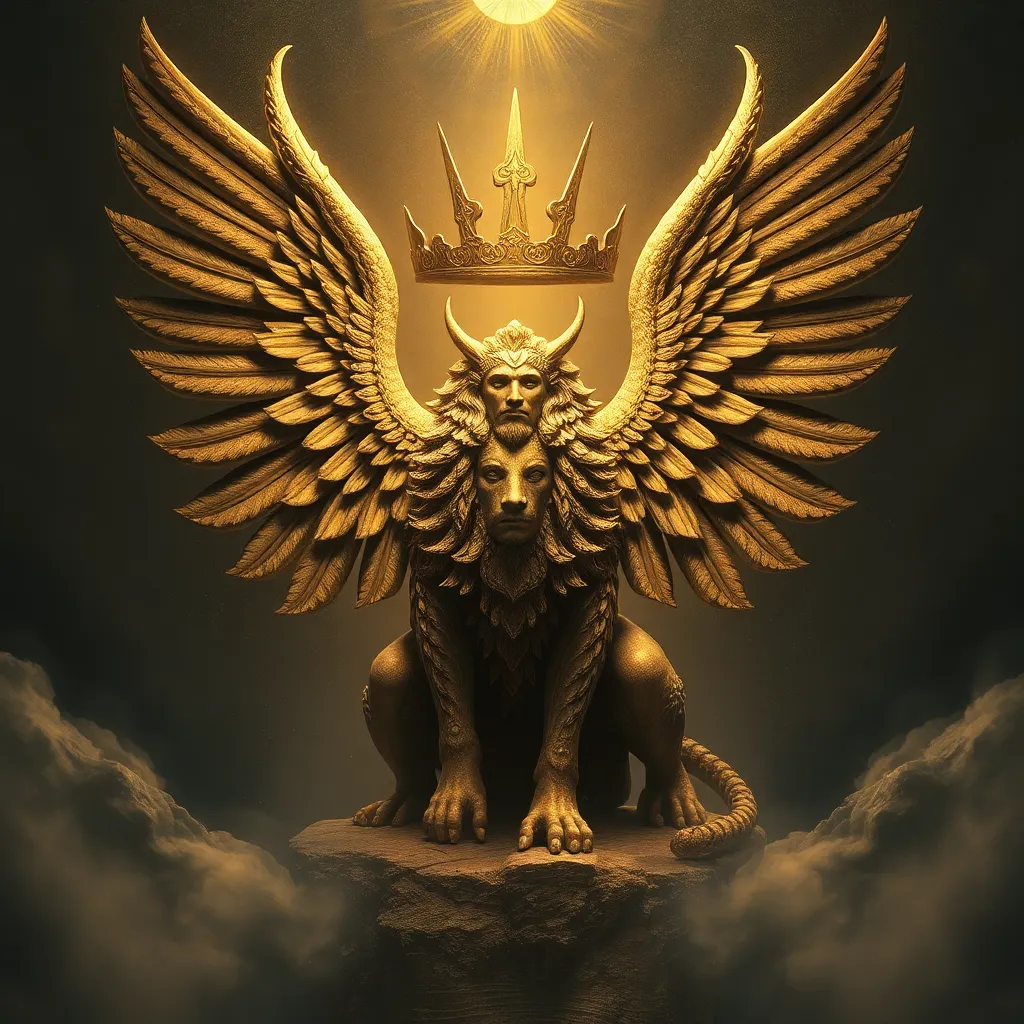The Wendigo’s Symbolism: Exploring the Different Meanings and Interpretations of this Creature
I. Introduction
The Wendigo is a legendary creature that has captivated the imaginations of many across North America, particularly within the Algonquian-speaking tribes. Described often as a spirit of insatiable hunger, the Wendigo embodies themes of greed, consumption, and the darker aspects of human nature.
Symbolism plays a crucial role in folklore, offering deeper insights into cultural beliefs and societal issues. The Wendigo serves as a potent symbol that transcends its origins, allowing for various interpretations that resonate with contemporary audiences.
This article aims to explore the multifaceted symbolism of the Wendigo, examining its historical context, representations of greed and mental health, environmental implications, and its presence in modern pop culture.
II. Historical Context of the Wendigo
The Wendigo’s origins lie deeply rooted in Algonquian culture, where it is often depicted as a malevolent spirit that preys on the weak and hungry. Traditionally, the Wendigo was associated with winter, starvation, and the desperate measures that people might take to survive.
Over time, the Wendigo myth has evolved, adapting to the changing cultural landscapes. From a spirit of the woods to a metaphor for human excess, the legend reflects the fears and anxieties of different eras. Geographic variations exist, with tribes across Canada and the United States offering unique interpretations of the Wendigo.
- In some cultures, the Wendigo is viewed as a warning against greed and selfishness.
- In others, it serves as a cautionary tale about the consequences of cannibalism during times of famine.
III. The Wendigo as a Symbol of Greed and Consumption
The most prominent interpretation of the Wendigo is its connection to insatiable hunger and cannibalism. The creature is often depicted as a gaunt figure, forever searching for sustenance, illustrating the never-ending cycle of greed.
In contemporary society, the Wendigo can be seen as a representation of materialism, where the relentless pursuit of wealth and possessions leads to moral decay. This symbolism resonates as people navigate a world that often prioritizes consumption over community.
- The Wendigo reminds us of the dangers of unchecked ambition.
- It serves as a metaphor for the cultural mindset that equates success with accumulation.
Modern parallels can be drawn to various issues, such as corporate greed and environmental destruction, highlighting the relevance of the Wendigo myth in today’s context.
IV. The Wendigo and Mental Health Interpretations
Beyond its ties to greed, the Wendigo can also serve as a symbol for mental health struggles. Some interpretations link the creature to conditions like psychosis and depression, representing the inner demons that haunt individuals.
The Wendigo embodies the struggle against these demons, illustrating the fear and isolation that can accompany mental health issues. This symbolism is particularly poignant in Indigenous cultures, where mental health stigma can often prevent individuals from seeking help.
- The Wendigo’s insatiable hunger can symbolize the never-ending nature of mental health battles.
- Understanding this interpretation can foster empathy and awareness regarding mental health issues.
V. The Wendigo in Environmental Context
The Wendigo’s symbolism extends to environmental concerns, representing ecological imbalance and the consequences of overconsumption. As humanity continues to exploit natural resources, the Wendigo serves as a cautionary figure, warning against the perils of greed that lead to environmental degradation.
In the context of climate change, the Wendigo reflects the urgent need for a shift in perspective toward sustainability and stewardship of the Earth. The creature’s insatiable hunger can be viewed as a metaphor for humanity’s relentless consumption of nature’s bounty.
- The Wendigo warns against the destructive cycle of overconsumption.
- It encourages reflections on our relationship with nature and the environment.
This cautionary tale is essential for future generations, emphasizing the importance of respecting and preserving our natural world.
VI. The Wendigo in Pop Culture
The Wendigo has made its way into modern literature, films, and video games, evolving into a figure that reflects contemporary fears and anxieties. Its representations vary widely, from horror stories to psychological thrillers, showcasing the creature’s versatility in pop culture.
Modern interpretations often blend traditional Wendigo symbolism with new elements, shaping public perceptions and understanding of the creature. This blending of old and new highlights the continued relevance of the Wendigo in storytelling.
- In literature, the Wendigo is often used to explore themes of isolation and madness.
- Film adaptations frequently emphasize the horror aspect, focusing on the monstrous nature of the Wendigo.
VII. Comparative Analysis with Other Mythical Creatures
When comparing the Wendigo to other mythical creatures like vampires and werewolves, several similarities and differences emerge. All these figures embody societal fears and serve as moral lessons within their respective cultures.
- Similarities include their representation of the darker aspects of humanity.
- Unlike vampires, who often symbolize seduction and immortality, or werewolves, who represent the struggle between man and beast, the Wendigo is uniquely tied to themes of consumption and survival.
The unique aspects of the Wendigo lie in its direct connection to Indigenous cultural narratives and its role as a symbol of caution against the consequences of human nature.
VIII. Conclusion
The Wendigo’s symbolism is multifaceted, representing themes of greed, mental health struggles, environmental concerns, and cultural cautionary tales. As a creature of folklore, it encapsulates the fears and values of the societies that tell its stories.
Preserving Indigenous narratives is vital for understanding the depth of the Wendigo’s symbolism and the lessons it imparts. Exploring the various interpretations of the Wendigo encourages a deeper appreciation for the complexities of folklore and the human experience.
As we continue to confront modern challenges, the Wendigo serves as a reminder to reflect on our actions and their implications, urging us to seek balance and understanding in a world often driven by consumption and fear.



